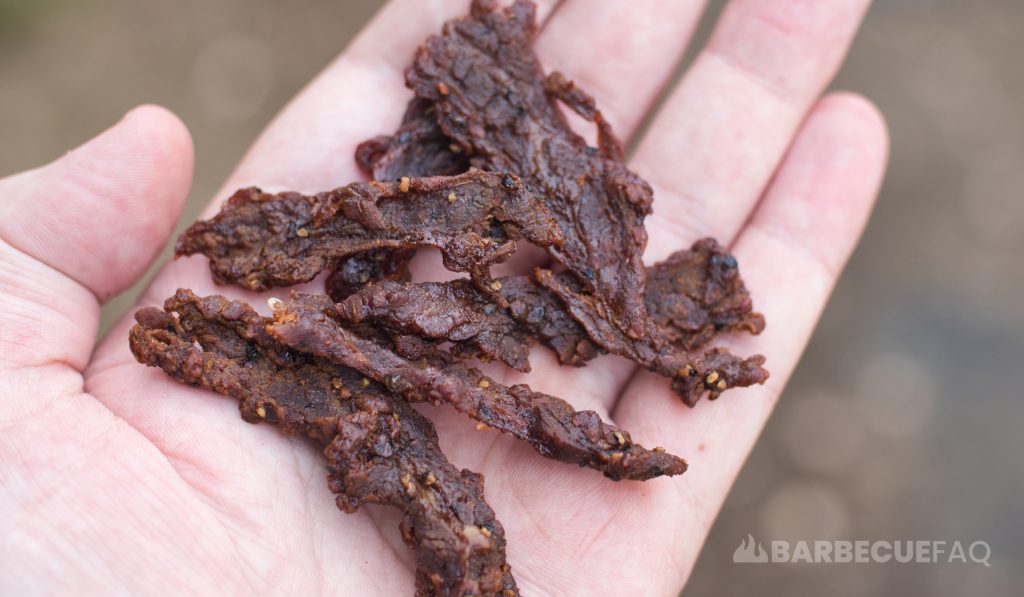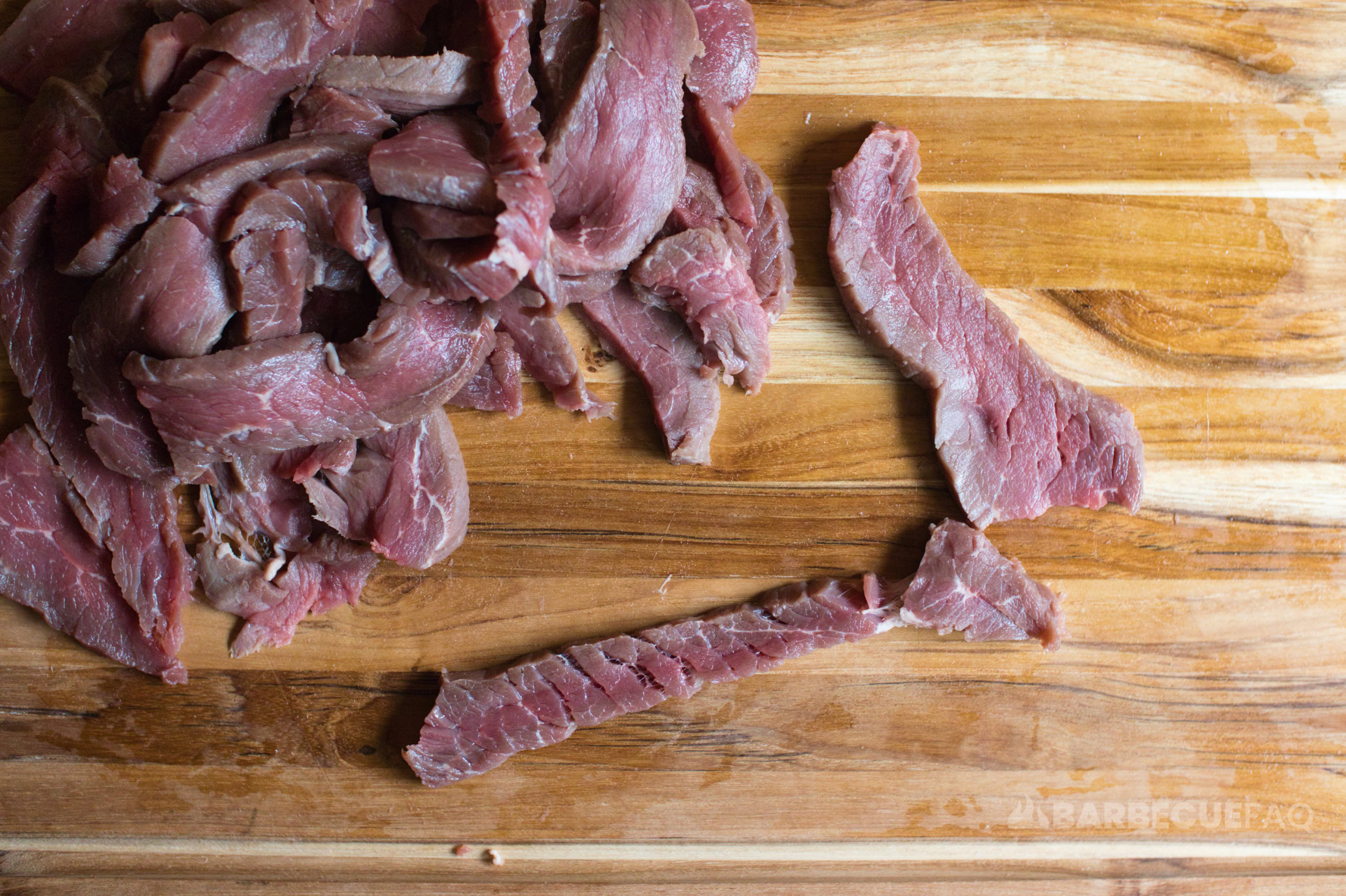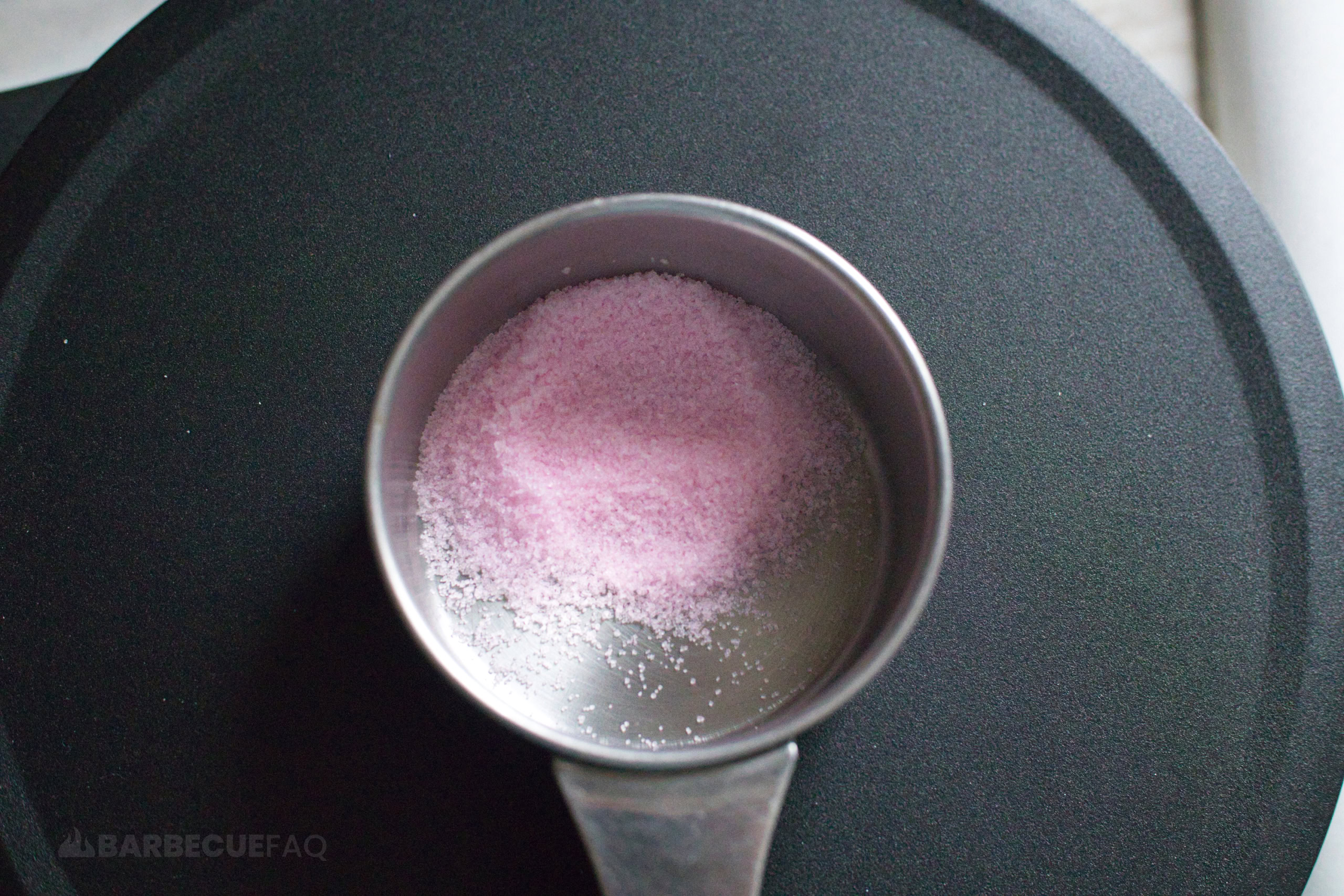What Type of Meat to Use for Beef Jerky
This recipe uses Flank steak.
If you don’t have flank steak, any of the following will suffice:
- Top round/london broil
- Bottom round
- Eye of round
- Brisket flat
- Round tip
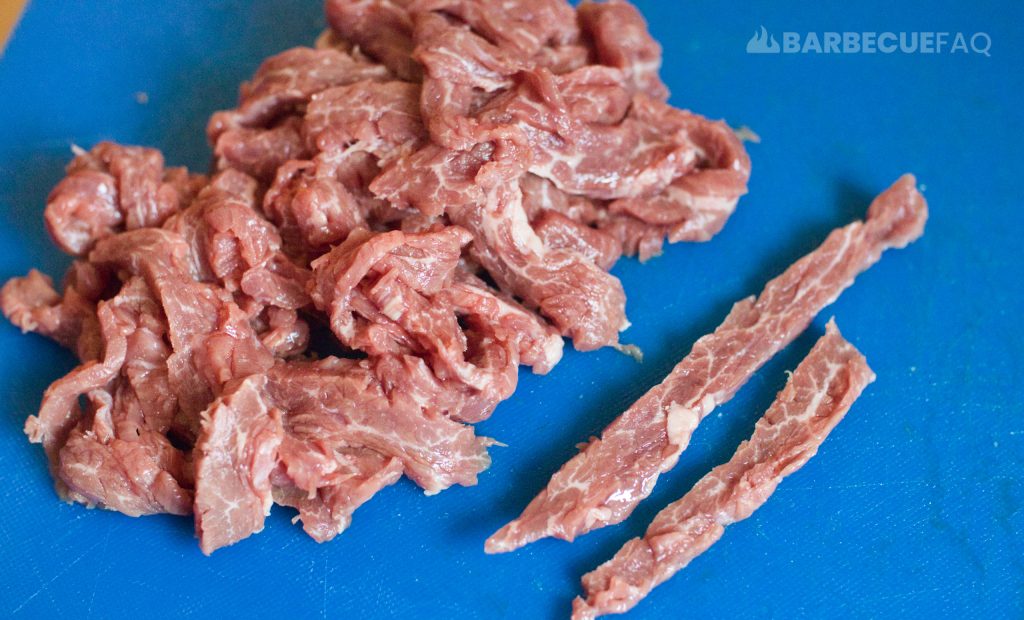
Any cut that’s lean and cheap works well.
If your goal is preservation, look for a cut that is as lean as possible.
Slicing the Meat for Jerky
The way you slice will depend on your taste preferences.
- If you prefer Soft Jerky – slice against the grain.
- If you prefer jerky with a Tug – slice with the grain.
If you’re unsure of what “grain” means with respect to meat – read this article.
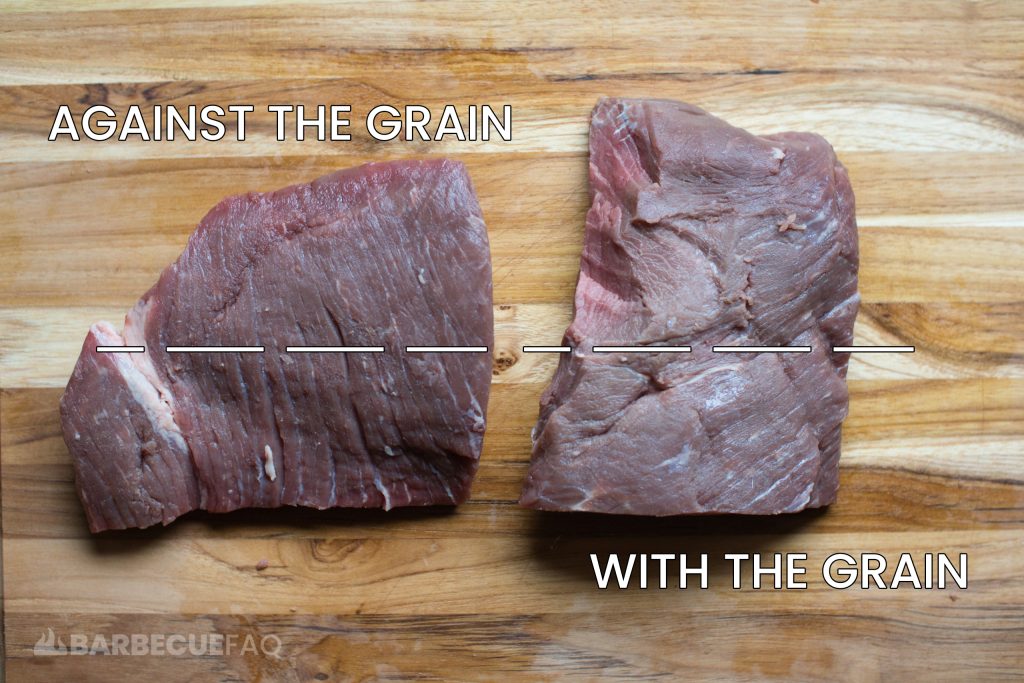
You also want to slice the meat to around 1/8″ – 1/4″ thick.
This ensures that the meat dehydrates in a timely manner and is easier to chew.
BBQ-Sauce Beef Jerky Marinade Ingredients
This marinade is for ~1 lb of meat.
- 1/2 Cup Sticky Fingers Carolina Sweet BBQ Sauce*
- 2/3 Cup Water
- 1/4 Cup Molasses
- 3/4 Tbsp of Morton Kosher Salt
- 1 Tsp Paprika
- 1 Tsp Chili Powder
- 1/2 Tsp Cloves (Nail removed and flower ground)
- 1 Tbsp 16 Mesh (Coarse) Black Pepper
- 1 Tsp Onion Powder
- 1 Tsp Garlic Powder
- 1 Tbsp Vinegar
*Use your favorite BBQ Sauce – the goal of the other ingredients is just to build on the flavors of the sauce.
If you want to add “smoke” flavor, add 1/2 tbsp of Liquid smoke to the marinade OR use a BBQ sauce that has liquid smoke in it.
Marinating the Beef Jerky
Ensure the marinade ingredients are well combined – especially the molasses and the kosher salt.
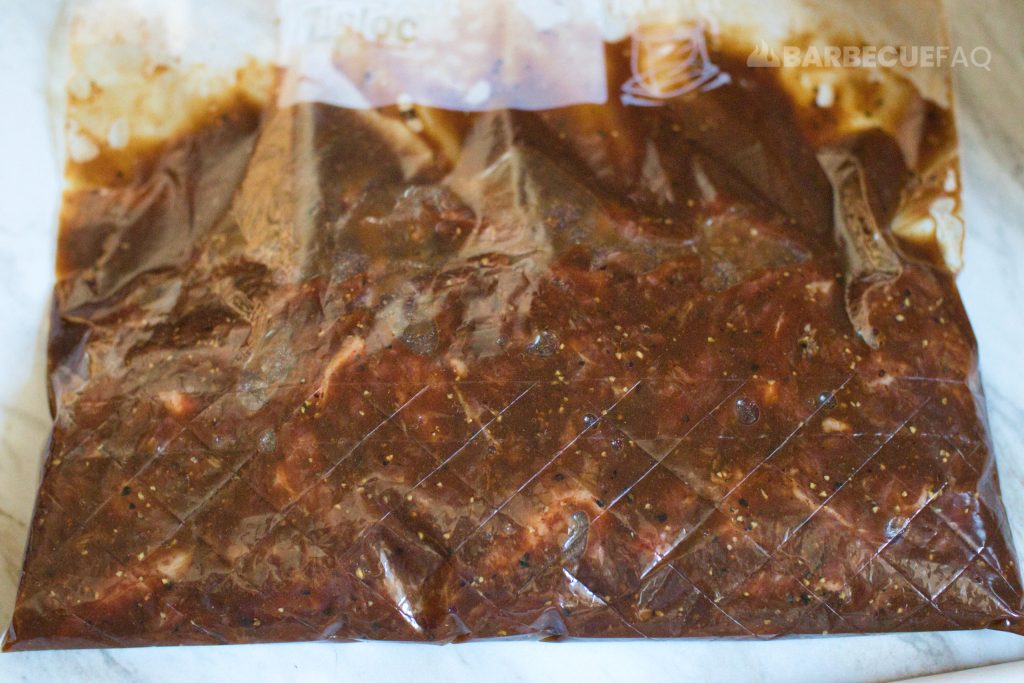
To a gallon storage bag or non-reactive container add your sliced meat and then your marinade.
Marinate for at least 2 hours or overnight – I prefer overnight.
Heat Treating the Beef Jerky
I like to heat treat my beef jerky so that I can dehydrate at a lower temperature – I find the jerky is much softer this way.
If you don’t care about this step, skip it – dehydrate at 160F.
Set your oven to 350F.
Line a baking sheet with aluminum foil and then put oven-safe cooling racks on top:
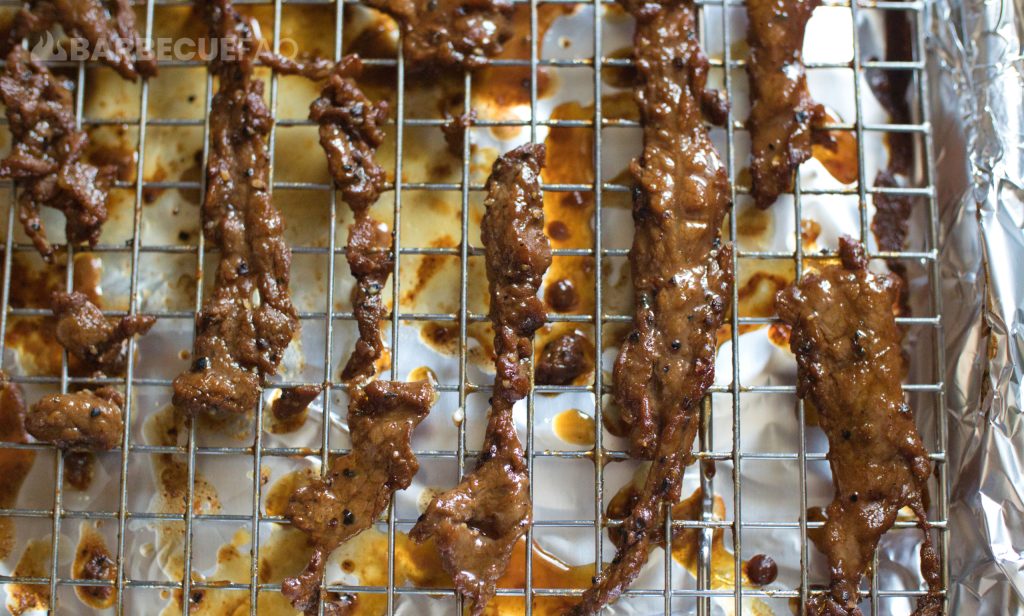
Put your marinated beef jerky on top of the cooling racks.
Once the oven is pre-heated, put your baking sheet on the middle rack for 10 minutes.
While the jerky heat treats set your dehydrator to 120-130F.
Dehydrating the Beef Jerky
Once the beef jerky is heat treated, transfer the jerky strips to your dehydrator trays.
Allow the meat to dehydrate for at least 3 hours before checking for doneness.
Checking the Jerky for Doneness
At 3 hours, start taking a few pieces that you suspect are done out of the dehydrator and allow them to cool for 5-10 minutes.
After 10 minutes, bend a piece to check for “spider webbing.”

If the bend feels rubbery and you see hues of red/pink – the jerky is not done and needs to dehydrate longer.
Typically it takes ~3-5 hours for jerky that’s sliced 1/8″ – 1/4″ thick.
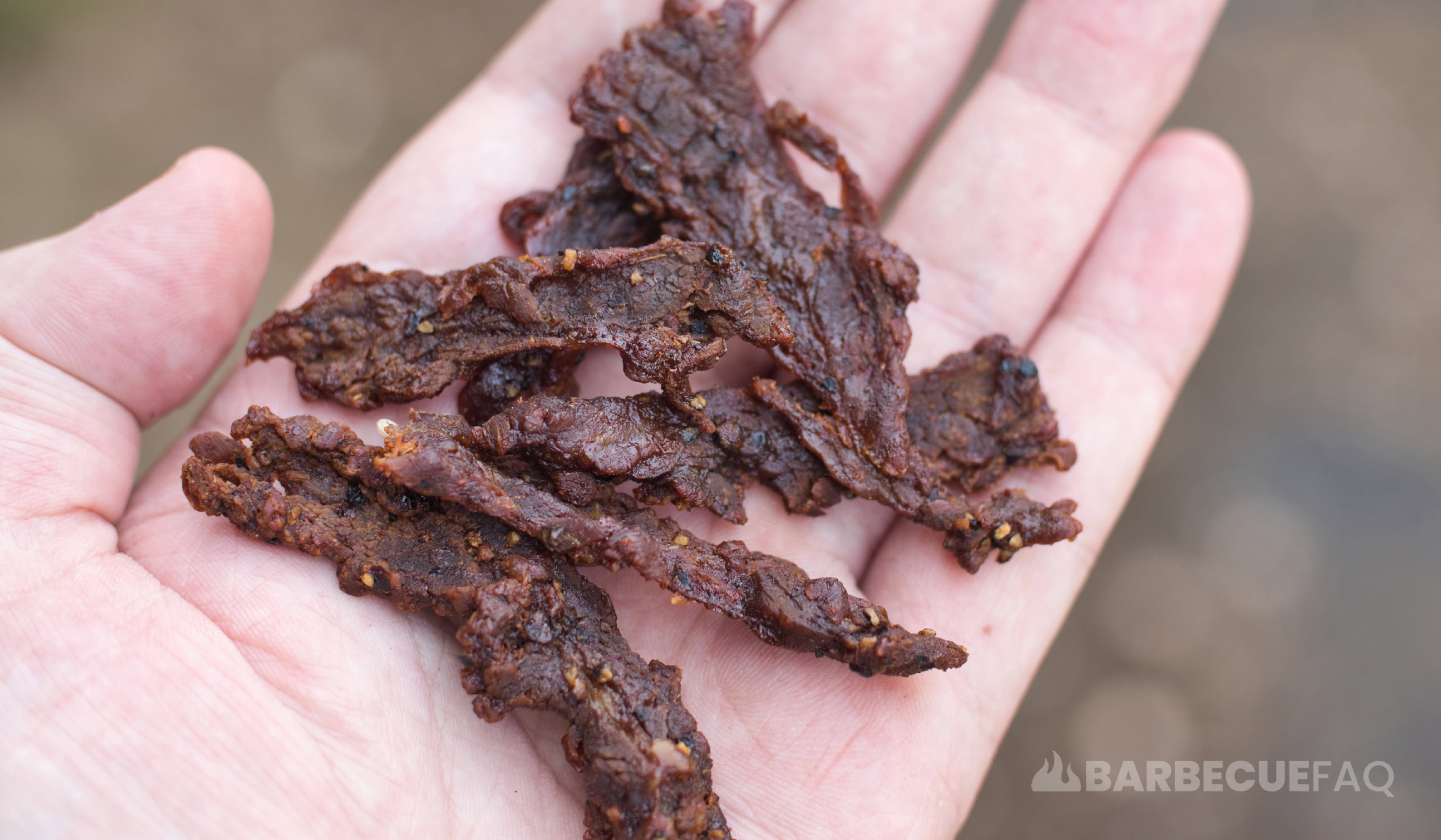
BBQ Sauce-Flavored, Flank Steak Beef Jerky
Ingredients
- 1 lb Flank Steak
BBQ Sauce Marinade
- 1/2 Cup Sticky Fingers Carolina Sweet BBQ Sauce
- 2/3 Cup Water
- 1/4 Cup Molasses
- 0.75 Tbsp of Morton Kosher Salt
- 1 Tsp Paprika
- 1 Tsp Chili Powder
- 1/2 Tsp Cloves Nail removed and flower ground
- 1 Tbsp 16 Mesh Coarse Black Pepper
- 1 Tsp Onion Powder
- 1 Tsp Garlic Powder
- 1 Tbsp Vinegar
Instructions
Slicing and Marinating Jerky
- Take 1 lb of flank steak and cut against the grain. Slice the strips so that they're 1/8" – 1/4" thick.
- In a bowl combine the marinade ingredients in the specified quantities. Ensure the molasses and salt are well combined.
- In a ziplock bag or non-reactive container, add your sliced meat and marinade ingredients. Massage the marinade into the meat.
- Marinate the jerky for at least 2 hours or ideally, overnight.
Heat Treating the Jerky Meat
- Line a baking sheet with aluminum foil. Then place oven-safe cooling racks on top. Put your marinated beef jerky on top of the cooling racks, ensure that pieces aren't touching or overlapping.
- Pre-heat your oven to 350F.
- Once pre-heated put your jerky in the oven on the middle rack for 10 minutes.
- While your jerky is heat treating, set your dehydrator to 130F.
Dehydrating the Beef Jerky
- Once your jerky is done heat treating, place your beef jerky in your dehydrator. Ensure pieces aren't touching or overlapping.
- llow the jerky to dehydrate for 3 hours and then start checking for doneness.
Testing Beef Jerky for Doneness
- After 3 hours take a few pieces of beef jerky out of the dehydrator and allow them to cool for 5-10 minutes.
- Once cooled, bend the jerky. If at the bend you notice a "spider webbing" – it's done. If at the bend you notice the jerky is rubbery and has hues of red/pink, it's not done and needs to keep dehydrating.
Storing the Jerky
- Once done, place in a ziplock bag with the top open and allow the jerky to aerate for 30 minutes. Once aerated zip the top and store in a cool, dry, dark place.


